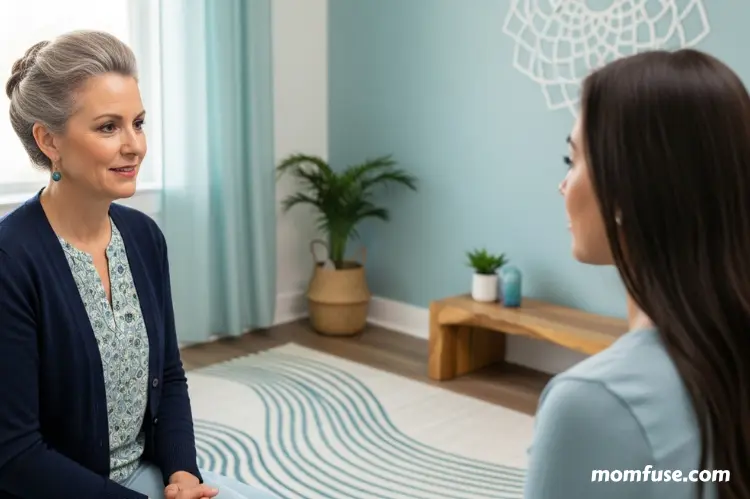Establishing a comprehensive approach to healing is important for those seeking profound shifts in their mental and emotional well-being. Root-level healing delves into the fundamental issues that contribute to existing challenges, providing both relief and clarity. This article explores the mechanisms behind integrative therapy and offers insights on how to effectively train for this transformative process.
Understanding Integrative Therapy

Integrative therapy represents a holistic approach that combines disciplines such as psychology, wellness practices, and alternative methodologies. Instead of focusing solely on symptoms, this therapy seeks to identify and address the underlying causes of adversity. Individuals benefit from treatments tailored to their unique needs, fostering a sense of empowerment.
This multifaceted approach allows practitioners to utilize various modalities. Integrative psychology education equips therapists with the skills to better understand how physical, psychological, and social elements intertwine in the healing process. Techniques may include cognitive-behavioral therapy, mindfulness, and energy healing. These diverse strategies facilitate deeper connections to oneself and promote lasting change.
Developing Self-Awareness

Self-awareness is a crucial component in root-level healing. Recognizing personal triggers, fears, and desires enables individuals to confront and understand their emotional landscape. Engaging in self-reflection activities, such as journaling, meditation, and therapy, can provide critical insights into one’s patterns of behavior.
Therapists often guide clients in cultivating this awareness by encouraging them to monitor thoughts and feelings. Becoming attuned to bodily sensations when experiencing stress can illuminate the root causes of anxiety or discomfort. People can gain a better understanding of their emotional health by investigating these physical aspects.
Building a Supportive Environment

A supportive environment is integral to effective healing. Those seeking growth and transformation require a foundation that nurtures their emotional journey. This includes relationships with friends, family, and community members that align with one’s healing goals. Open communication serves as a core principle in fostering connections, allowing individuals to express their needs and vulnerabilities.
Group therapy sessions can strengthen this support system, connecting like-minded individuals who share similar experiences. These spaces facilitate shared learning and mutual encouragement, reinforcing the idea that healing is a collaborative endeavor.
Integrative Techniques for Root-Level Healing

Employing a variety of integrative techniques can significantly enhance healing outcomes. Practitioners may integrate modalities like yoga, art therapy, and aromatherapy into their sessions, adding depth and diversity to the process. These techniques often target different aspects of the individual, allowing them to heal on multiple levels.
Mindfulness practices encourage clients to embrace the present moment. Techniques such as deep breathing and visualizations cultivate a sense of peace, enabling individuals to manage stress and anxiety effectively. Similarly, incorporating creative expression through art can unlock emotions that may be difficult to articulate verbally, facilitating deeper exploration.
Integrative techniques support physical well-being alongside emotional healing. Methods like massage therapy or acupuncture can reduce tension and promote circulation, contributing to overall balance. Combining physical and mental health strategies ensures a more comprehensive approach, addressing the root causes of distress rather than just surface symptoms.
Setting Intentions and Goals
Intentions and goals serve as guiding stars for individuals embarking on their healing journey. Setting specific, achievable objectives allows for a structured approach to therapy, enabling clients to measure progress effectively.
Goals should encompass both short-term and long-term aspirations, providing a roadmap for personal growth. Regularly revisiting and adjusting these goals can keep individuals accountable and motivated. Recognizing and celebrating milestones, no matter how small, fosters a sense of accomplishment and reinforces commitment to the healing process.
When establishing intentions and goals, it’s important to align them with personal values and needs rather than external expectations. Collaborating with a therapist or support system can help clarify which goals are realistic and meaningful. Breaking larger objectives into smaller, actionable steps makes progress feel more manageable and less overwhelming. Flexibility is key; as individuals grow and circumstances change, goals may need to evolve accordingly.
Overcoming Challenges in Healing

Every healing journey is marked by challenges, and recognizing these obstacles is vital for success. Resistance to change and discomfort can surface as individuals confront their past experiences. Being aware of these feelings allows individuals to process them rather than suppress them. Practitioners play an important role in guiding clients through these difficulties, implementing strategies to navigate their emotions safely.
Therapists may encourage clients to adopt a curious mindset toward their struggles. Instead of viewing obstacles as setbacks, individuals can reframe them as opportunities for growth. Embracing a learning-oriented perspective can significantly shift how challenges are perceived, leading to more constructive outcomes in their healing journey.
Training for root-level healing with integrative therapy is an enriching process that requires dedication, self-reflection, and support. It is not just about alleviating symptoms but rather transforming them into learning experiences. Each step taken in this healing process brings individuals closer to their authentic selves, fostering deeper and more fulfilling relationships with themselves and others.
Read Next: The Role of Hydrotherapy in Supporting Disability Care Programs

